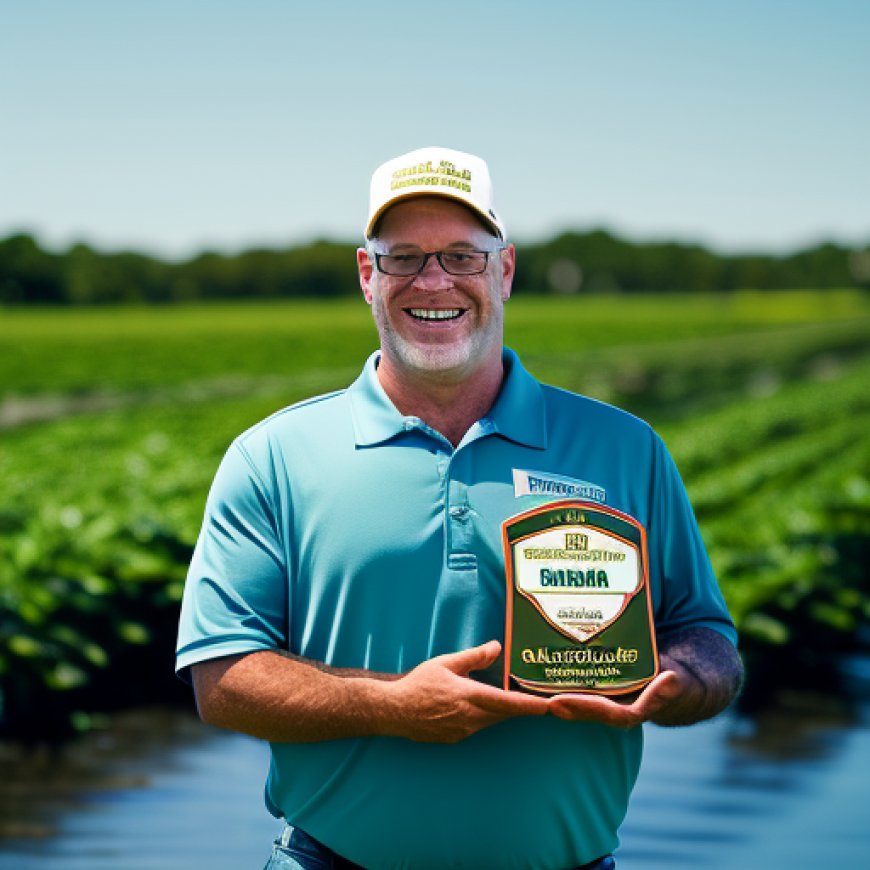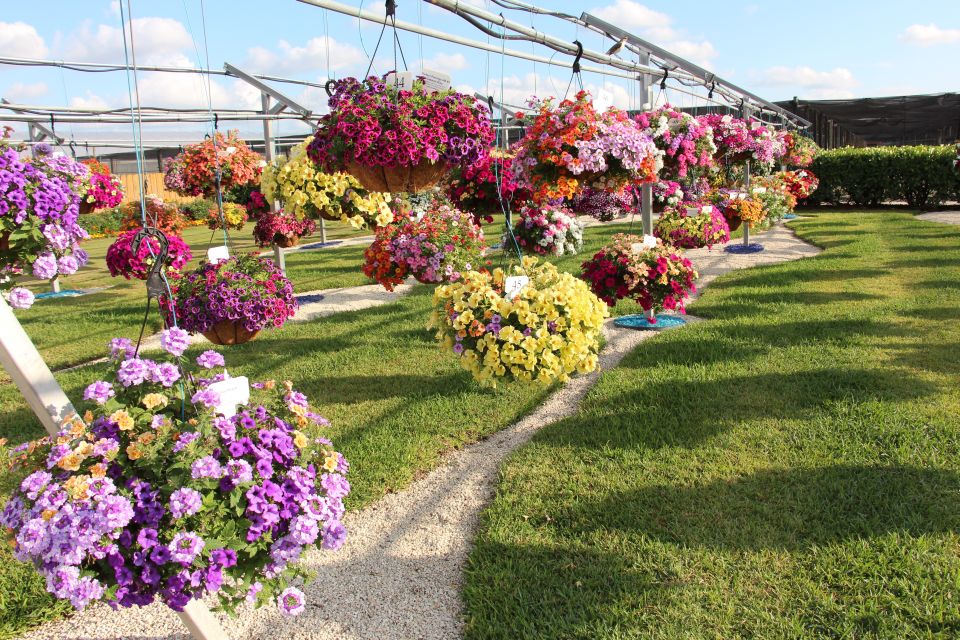Costa Farms Wins 2024 Florida Agricultural-Environmental Leadership Award
Costa Farms Wins 2024 Florida Agricultural-Environmental Leadership Award Greenhouse Grower


Costa Farms Wins 2024 Florida Agricultural-Environmental Leadership Award

Introduction
Established in 1994, the Agricultural-Environmental Leadership Award is annually presented to growers who produce agricultural goods that Florida residents rely on, while also committing to the protection and preservation of the Sunshine State’s natural resources. On April 24, the 2024 winner was announced by Florida Commissioner of Agriculture Wilton Simpson as Costa Farms.
Florida’s Agricultural Landscape
“Horticulture plays a vital role in Florida’s agricultural landscape, contributing to our economy, food supply, and natural beauty. It is a thriving industry thanks to our favorable climate and innovative growers like Costa Farms,” says Commissioner Simpson.
About Costa Farms
Costa Farms is located in Miami, FL, and is one of the largest commercial plant growers in the U.S., with a staff of more than 5,000 professional growers and helpers. The company has also been family-owned and operated for more than 60 years and was No. 1 on Greenhouse Grower’s Top 100 Growers list of 2023.
Sustainable Practices
One of the factors in Costa Farms being presented with the 2024 Agricultural-Environmental Leadership Award is the company being a certified member of More Profitable Sustainability (MPS). MPS is a recognized standard in the horticultural industry for creating and supporting more sustainable practices. That includes ways to better balance and minimize pesticide usage, providing resource tracking and management, and promoting a variety of conservation efforts.
Costa Farms has more than 34 acres of conservation easements, 16 acres of water storage and retention areas, and over 60 acres of wetlands on the National Wetland Inventory, which is part of the U.S. Fish & Wildlife Service. Additionally, the company has a “water moisture program” to help conserve water and minimize fertilizer overflow in potted plants. Lastly, Costa Farms reuses plant trays and recycles plant materials and discarded pallets for use as soil amendments and potting mix chips respectively.
Recognition and Awards
In addition to its status as a 2024 Agricultural-Environmental Leadership Award winner, Costa Farms will also be recognized by Commissioner Wilton Simpson at the Fresh From Florida Breakfast at the Florida Farm Bureau annual meeting held on Wednesday, October 30.
SDGs, Targets, and Indicators
1. Which SDGs are addressed or connected to the issues highlighted in the article?
- SDG 2: Zero Hunger
- SDG 6: Clean Water and Sanitation
- SDG 12: Responsible Consumption and Production
- SDG 15: Life on Land
2. What specific targets under those SDGs can be identified based on the article’s content?
- SDG 2.4: By 2030, ensure sustainable food production systems and implement resilient agricultural practices that increase productivity and production, that help maintain ecosystems, that strengthen capacity for adaptation to climate change, extreme weather, drought, flooding, and other disasters, and that progressively improve land and soil quality.
- SDG 6.4: By 2030, substantially increase water-use efficiency across all sectors and ensure sustainable withdrawals and supply of freshwater to address water scarcity and substantially reduce the number of people suffering from water scarcity.
- SDG 12.4: By 2020, achieve the environmentally sound management of chemicals and all wastes throughout their life cycle, in accordance with agreed international frameworks, and significantly reduce their release to air, water, and soil in order to minimize their adverse impacts on human health and the environment.
- SDG 15.9: By 2020, integrate ecosystem and biodiversity values into national and local planning, development processes, poverty reduction strategies, and accounts.
3. Are there any indicators mentioned or implied in the article that can be used to measure progress towards the identified targets?
- Indicator for SDG 2.4: Adoption of sustainable agricultural practices, such as minimizing pesticide usage and promoting conservation efforts.
- Indicator for SDG 6.4: Water-use efficiency measures, such as water moisture programs and conservation of water resources.
- Indicator for SDG 12.4: Recycling and reuse of plant materials and pallets, as well as responsible management of chemicals and wastes.
- Indicator for SDG 15.9: Conservation efforts, including the establishment of conservation easements, wetlands preservation, and integration of biodiversity values into planning and development processes.
SDGs, Targets, and Indicators
| SDGs | Targets | Indicators |
|---|---|---|
| SDG 2: Zero Hunger | 2.4: By 2030, ensure sustainable food production systems and implement resilient agricultural practices that increase productivity and production, that help maintain ecosystems, that strengthen capacity for adaptation to climate change, extreme weather, drought, flooding, and other disasters, and that progressively improve land and soil quality. | Adoption of sustainable agricultural practices, such as minimizing pesticide usage and promoting conservation efforts. |
| SDG 6: Clean Water and Sanitation | 6.4: By 2030, substantially increase water-use efficiency across all sectors and ensure sustainable withdrawals and supply of freshwater to address water scarcity and substantially reduce the number of people suffering from water scarcity. | Water-use efficiency measures, such as water moisture programs and conservation of water resources. |
| SDG 12: Responsible Consumption and Production | 12.4: By 2020, achieve the environmentally sound management of chemicals and all wastes throughout their life cycle, in accordance with agreed international frameworks, and significantly reduce their release to air, water, and soil in order to minimize their adverse impacts on human health and the environment. | Recycling and reuse of plant materials and pallets, as well as responsible management of chemicals and wastes. |
| SDG 15: Life on Land | 15.9: By 2020, integrate ecosystem and biodiversity values into national and local planning, development processes, poverty reduction strategies, and accounts. | Conservation efforts, including the establishment of conservation easements, wetlands preservation, and integration of biodiversity values into planning and development processes. |
Copyright: Dive into this article, curated with care by SDG Investors Inc. Our advanced AI technology searches through vast amounts of data to spotlight how we are all moving forward with the Sustainable Development Goals. While we own the rights to this content, we invite you to share it to help spread knowledge and spark action on the SDGs.
Fuente: greenhousegrower.com

Join us, as fellow seekers of change, on a transformative journey at https://sdgtalks.ai/welcome, where you can become a member and actively contribute to shaping a brighter future.







